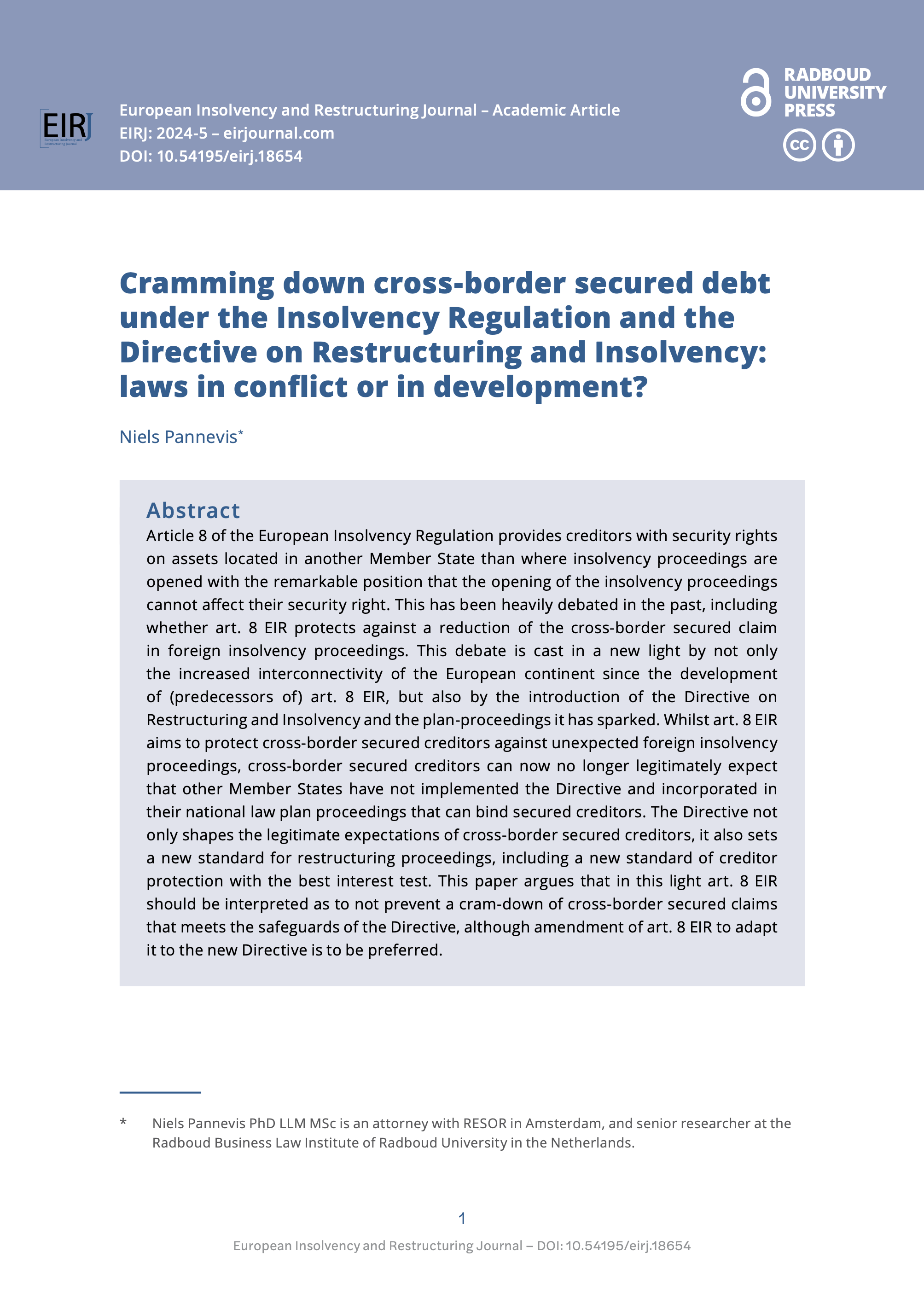Cramming down cross-border secured debt under the Insolvency Regulation and the Directive on Restructuring and Insolvency: laws in conflict or in development?
DOI:
https://doi.org/10.54195/eirj.19481Keywords:
restructuring plan, cramdown, best interest of creditors test, art. 8 EIR, cross-border security rights, WHOA, StaRUGAbstract
Article 8 of the European Insolvency Regulation provides creditors with security rights on assets located in another member state than where insolvency proceedings are opened with the remarkable position that the opening of the insolvency proceedings cannot affect their security right. This has been heavily debated in the past, including whether art. 8 EIR protects against a reduction of the cross border secured claim in foreign insolvency proceedings. This debate is cast in a new light by not only the increased interconnectivity of the European continent since the development of (predecessors of) art. 8 EIR, but also by the introduction of the Directive on Restructuring and Insolvency and the plan-proceedings it has sparked. Whilst art. 8 EIR aims to protect cross border secured creditors against unexpected foreign insolvency proceedings, cross border secured creditors can now no longer legitimately expect that other member states have not implemented the Directive and incorporated in their national law plan proceedings that can bind secured creditors. The Directive not only shapes the legitimate expectations of cross-border secured creditors, it also sets a new standard for restructuring proceedings, including a new standard of creditor protection with the best interest test. This paper argues that in this light art. 8 EIR should be interpreted as to not prevent a cram down of cross-border secured claims that meets the safeguards of the Directive, although amendment of art. 8 EIR to adapt it to the new Directive is to be preferred.
Downloads




